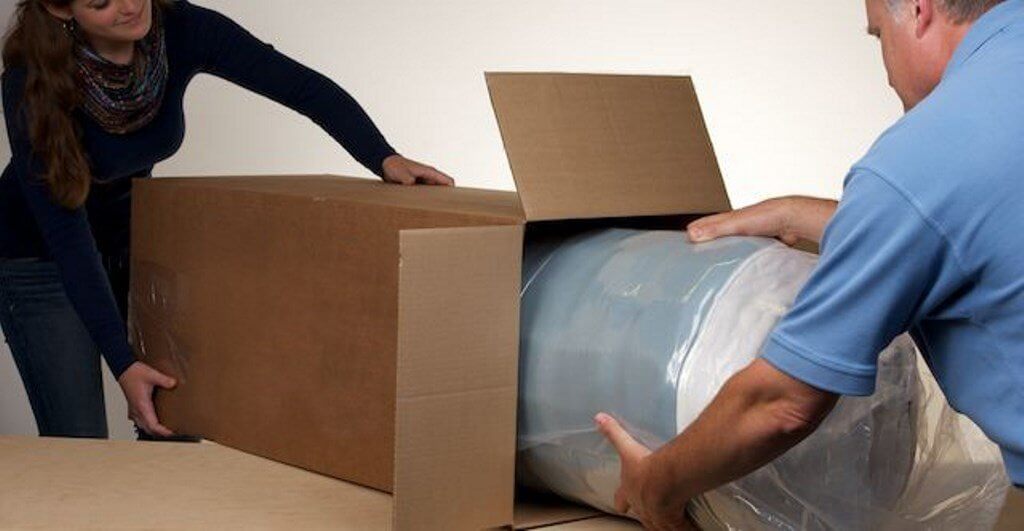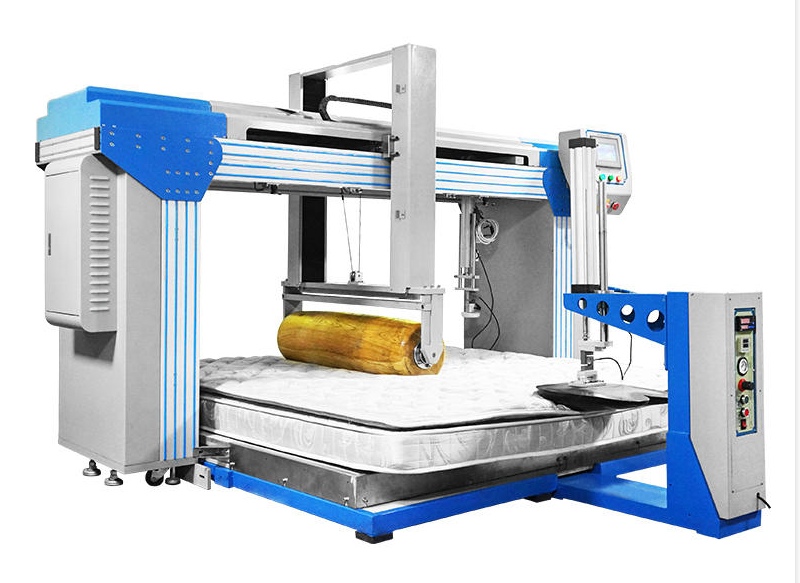Should You Buy A Bed In A Box? A 25 Year Mattress Industry Veteran Weighs Pros And Cons
A bed in a box mattress is a relatively new concept that has gained immense popularity in recent years. These mattresses are compressed, rolled, and then shipped in a compact box, making it easier for consumers to receive and set up their new bed.
While there are many advantages to purchasing a bed in a box mattress, there are also some drawbacks. I spent decades designing mattresses for my own online stores and for other sites, but it took a while to get good at it. I also figured out what materials are really good for bed in a box mattress construction and how companies can skimp on quality.
The convenience of buying a bed in a box mattress is one of the reasons I got into the mattress business in the first place, years ago. I hated visiting retail mattress stores and having to deal with sales people who didn’t seem to know much about sleep and choosing the right mattress.

In this article, we will explore the pros and cons of bed in a box mattresses to help you make an informed decision when shopping for the best mattress for your needs.
One of the most significant advantages of a bed in a box mattress is the convenience it offers. Bed in a box technology allows a mattress to be safely vacuum packaged or rolled to reduce shipping costs and make it easy for consumers to handle and install their own mattresses.
Conventional mattresses are cumbersome, often requiring multiple people to handle the weight and size. In contrast, bed in a box mattresses can be easily maneuvered and set up by a single person, making them an ideal choice for those who live alone or have limited space.
Additionally, the compact packaging of these mattresses makes them easier to transport, reducing shipping costs and making them more environmentally friendly. Another advantage of bed in a box mattresses is their affordability. Because they are manufactured using fewer materials and require less labor to produce, they are often less expensive than traditional mattresses.
This makes them an attractive option for those on a budget who still want to purchase a high-quality mattress. However, there are also some drawbacks to bed in a box mattresses. One potential issue is durability, with inferior mattresses made using lower density foams or textiles materials.

Because they are compressed and rolled for shipping, some people worry that they may not hold up as well over time. That’s actually not correct, and compression testing and its effects have been studied for decades. However, most bed in a box mattresses come with warranties that guarantee their durability and quality over an extended period.
Another potential drawback is the lack of options available. While there are many different types of bed in a box mattresses on the market, they may not offer the same level of customization as traditional mattresses. This can be problematic for those with specific sleep needs or preferences.
What You Should Expect To Pay For A Bed In A Box Mattress
While the price of a bed in a box mattress can vary significantly, most consumers can expect to spend between $500 and $1500 for a quality product. In general, the best mattresses on the market tend to fall in this price range, offering a balance of comfort and durability without breaking the bank.
However, it’s important to note that some high-end luxury brands purchased in a brick and mortar retail store may cost significantly more than a typical bed in a box. The primary reason for this is that the traditional mattress selling business model involves high overhead, including the following:
- Overhead Costs: Retail stores have significant overhead costs, including rent, utilities, staff salaries, and maintenance expenses. These costs are factored into the pricing of mattresses sold in physical stores. In contrast, bed-in-a-box companies often operate primarily online, which reduces their overhead costs and allows them to offer lower prices.
- Distribution Model: Traditional retail stores have a complex distribution network, involving manufacturers, distributors, and retailers, each adding their margin to the final price. This multi-tier distribution model contributes to higher costs. Bed-in-a-box companies, on the other hand, often have a more streamlined distribution model with fewer intermediaries, enabling them to bypass additional markups.
- Marketing Expenses: Retail mattress brands often invest heavily in advertising, showrooms, and sales commissions to promote their products. These marketing expenses are included in the price of mattresses sold in stores. Bed-in-a-box companies tend to focus on digital marketing, which can be more cost-effective, allowing them to offer lower prices.
- Quality and Materials: Price variations can also stem from differences in materials and construction. Some retail mattresses may use higher-quality materials or have more advanced features, which can contribute to their higher price tags. Bed-in-a-box mattresses, while often made with quality materials, may focus on streamlined designs and efficiency to reduce costs.
- Competition: The mattress market has become highly competitive, in fact- fierce- especially with the rise of online bed-in-a-box companies. To remain competitive, many of these online companies offer lower prices and promotions, attracting customers with cost savings. Traditional retail stores may have higher pricing to compensate for the additional expenses they incur and maintain profit margins.
As much as anyone in the mattress review business hates to freely admit it, commissions can be a large part of the cost at retail. In a brick and mortar store, you might be paying $500 in commissions to both the store owner and the sales person on a $2500 mattress purchase.
That’s why when shopping for a bed in a box mattress online, it’s essential to consider what you’re paying for. While some lower-priced options may seem like an excellent deal at first glance, they may not offer the same level of support and comfort as a higher-end product. On the other hand, some luxury brands may charge more for features that aren’t necessary for everyone, such as advanced cooling or customizability.
Ultimately, the best way to determine what you should pay for a bed in a box mattress is to consider your individual needs and budget. Do your research on different brands and read reviews from other customers to get an idea of what you can expect from each option. Additionally, consider factors such as warranty and return policies when making your decision. With some careful consideration, you can find a quality bed in a box mattress.
Bed In A Box Mattress Options From Memory Foam, Hybrid, To Natural Latex And Gel Foam
If you’ve started shopping for a bed in a box mattress option, we’ve got a lot of resources on our site which can educate you on different mattress types. I’ve included links below to mattresses we’ve tested in each of the categories.
- Memory Foam Mattresses: Memory foam mattresses are made from layers of memory foam, which conform to your body shape and provide pressure relief. They are known for their excellent motion isolation and can be a good choice for those who prefer a contouring feel and reduced partner disturbance.
- Latex Mattresses: Latex mattresses use layers of natural or synthetic latex foam (called SBR). They offer a responsive and buoyant feel, providing good support and pressure relief. Latex is also known for its breathability and durability. Natural latex mattresses are often favored by those seeking eco-friendly options, and they tend to be more responsive and livelier than all foam mattresses. They are also dust mite resistant, and are naturally antibacterial.
- Hybrid Mattresses: Hybrid mattresses combine different materials, typically combining an innerspring coil system with layers of urethane foam or latex. These mattresses aim to provide the benefits of both coil support and foam/latex comfort. Hybrid mattresses often offer a balance of support, pressure relief, and breathability.
- Innerspring Mattresses: Innerspring mattresses are constructed with a coil support system and comfort layers made of foam, fiber, or other materials. They offer a bouncier and more traditional feel compared to foam mattresses. Innerspring mattresses often provide good edge support and breathability. Generally, these kinds of bed in a box mattresses fall under the hybrid mattress category.
- Pillow-top Mattresses: Pillow-top mattresses feature an additional layer of padding stitched onto the top surface. This layer can be made of foam, fiberfill, latex, or other materials. Pillow-top mattresses provide added plushness and comfort, and they can be found in different mattress types, including memory foam and innerspring. Many hybrid mattresses contain built-in pillow top elements.
- Cooling/Gel-infused Mattresses: Many bed-in-a-box mattresses incorporate cooling technologies to help regulate body temperature during sleep. These mattresses may feature gel-infused foam, breathable covers, or other cooling materials to dissipate heat and promote a cooler sleep surface.
Do Mattress Manufacturers Test Their Products To Make Sure Compressing Them Won’t Cause Damage?
Yes. Almost all kinds of foam, textiles, and even innerspring components have been tested prior to designing a mattress which will be packaged as a bed in a box. These tests determine how well the materials will “spring back” after you remove the rolled up mattress from its shipping box and open the bag in which the mattress has been sealed. You’ll hear a hissing noise after you cut the sealed bag as air rushes inside and the mattress blooms back to its original size.
Here are several kinds of tests that are conducted on mattresses prior to consideration as a bed in a box model as it’s undergoing development testing:
- Compression Testing: This test involves subjecting the mattress to compression forces similar to those experienced during the packaging and shipping process. The mattress is compressed to a specific thickness and held in that state for a set period. After releasing the compression, the mattress is evaluated to ensure it regains its original shape and structural integrity.
- Durability Testing: Manufacturers perform durability tests to assess the resilience and long-term performance of the mattress. This can involve simulating years of usage by repeatedly applying pressure to various areas of the mattress to assess its ability to withstand compression and maintain support. Large tamping machines are used for this process.
- Recovery Testing: This test measures how well the mattress bounces back and regains its shape after being compressed and released. It evaluates the resilience of the mattress materials and their ability to recover from compression forces.
- Material Testing: The individual materials used in the mattress, such as memory foams, latex foam, springs, or latex, may undergo specific testing for durability, elasticity, and performance under compression. These tests ensure that the materials can withstand compression and will not undergo significant degradation or damage during the process, such as cracking or splitting.
- Quality Control Testing: Manufacturers often have quality control measures in place to evaluate the consistency and reliability of their products. This can involve random sampling of mattresses from production batches and subjecting them to various tests, including compression testing, to ensure they meet specific standards.
